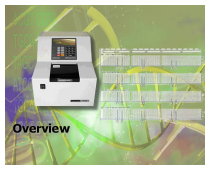Archival Notice
This is an archive page that is no longer being updated. It may contain outdated information and links may no longer function as originally intended.
Home | Glossary | Resources | Help | Contact Us | Course Map
Overview and Introduction
The Polymerase Chain Reaction (PCR) is a process by which a portion of a DNA strand can be replicated to yield multiple copies. Kary Mullis and members of the Human Genetics group at the Cetus Corporation (now Roche Molecular Systems) first described the PCR process in 1985. In 1993, Kary Mullis received the Nobel Prize in Chemistry for his work.
Visit the Applied Biosystems site for more information on PCR licensing, patents and trademarks.
The quality and quantity of DNA recovered from forensic samples are often limited, and characterization would not be possible without the PCR method. The PCR process has dramatically improved the capability of DNA analysis to obtain valuable evidence in a wide range of forensic applications.
Additional Online Courses
- What Every First Responding Officer Should Know About DNA Evidence
- Collecting DNA Evidence at Property Crime Scenes
- DNA – A Prosecutor’s Practice Notebook
- Crime Scene and DNA Basics
- Laboratory Safety Programs
- DNA Amplification
- Population Genetics and Statistics
- Non-STR DNA Markers: SNPs, Y-STRs, LCN and mtDNA
- Firearms Examiner Training
- Forensic DNA Education for Law Enforcement Decisionmakers
- What Every Investigator and Evidence Technician Should Know About DNA Evidence
- Principles of Forensic DNA for Officers of the Court
- Law 101: Legal Guide for the Forensic Expert
- Laboratory Orientation and Testing of Body Fluids and Tissues
- DNA Extraction and Quantitation
- STR Data Analysis and Interpretation
- Communication Skills, Report Writing, and Courtroom Testimony
- Español for Law Enforcement
- Amplified DNA Product Separation for Forensic Analysts


